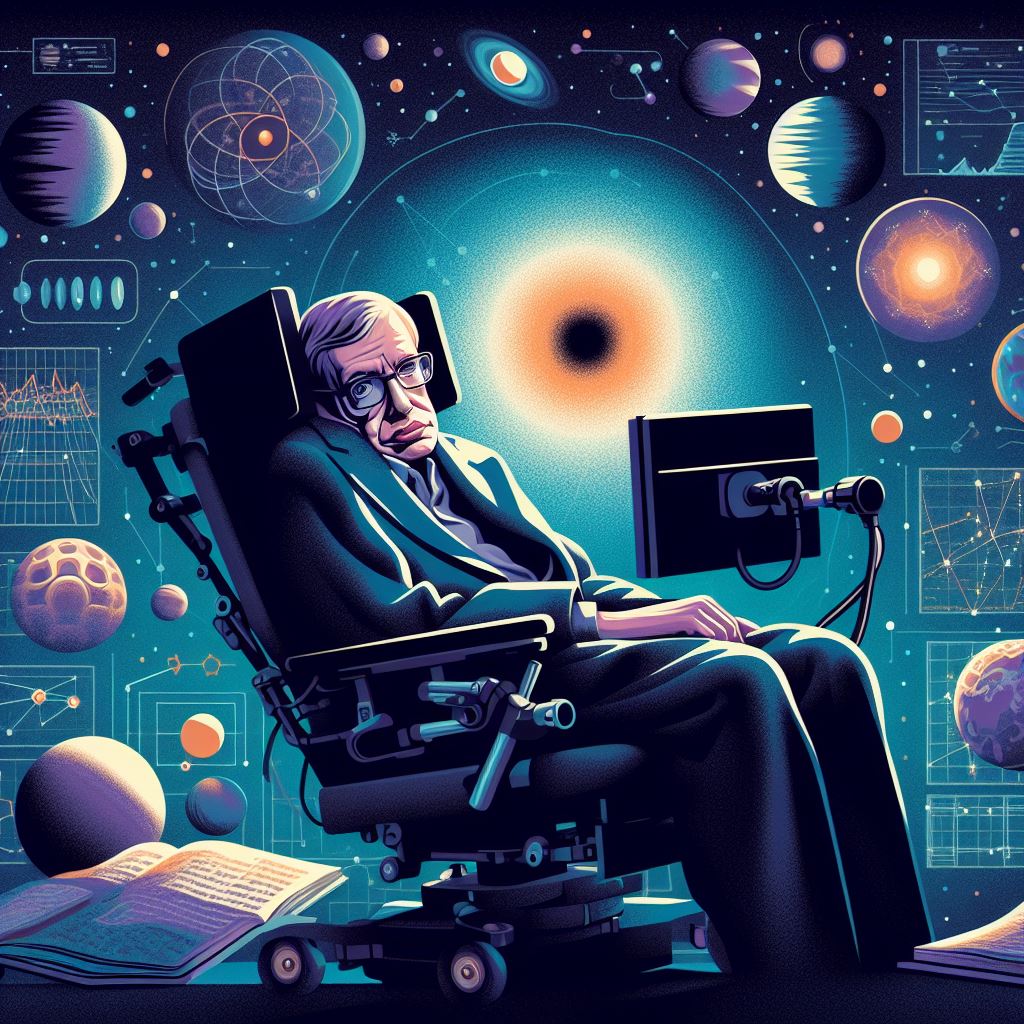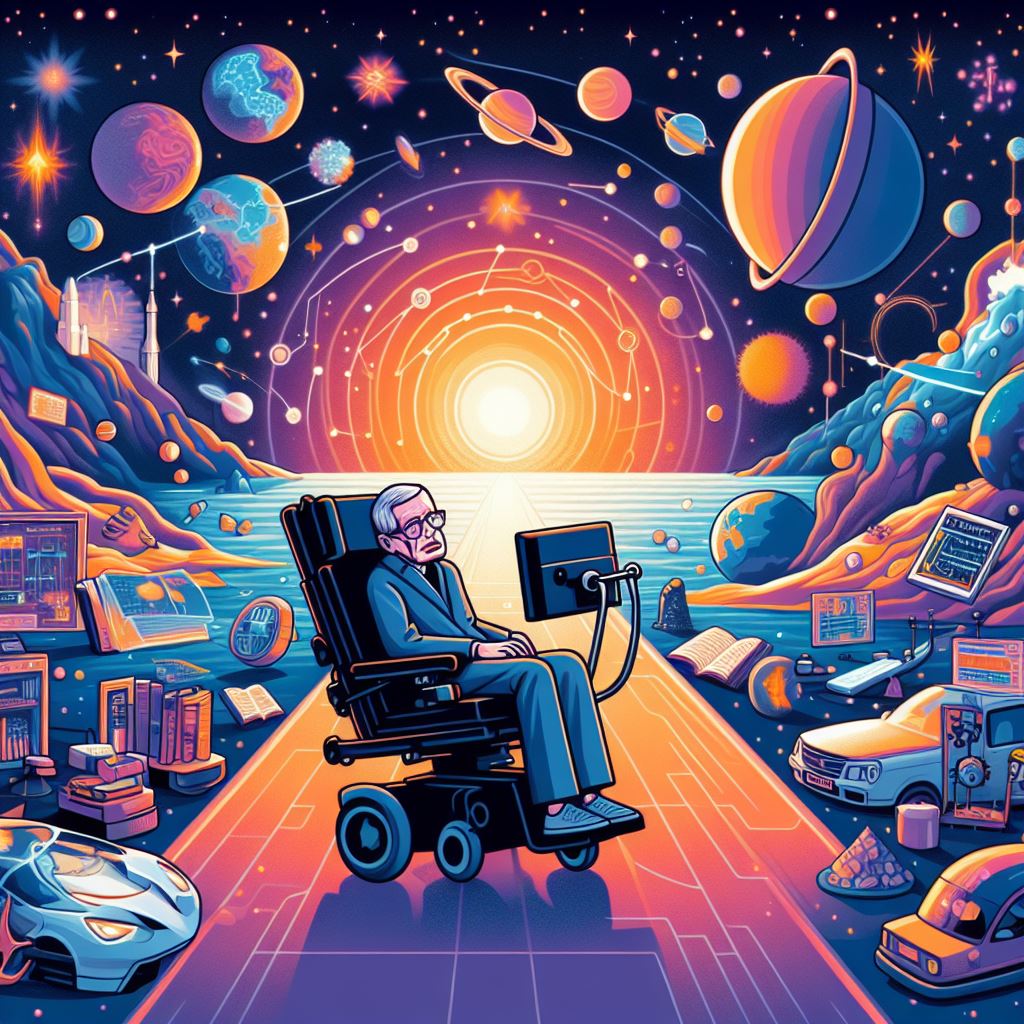Stephen Hawking stands as an iconic physicist and science communicator of the modern era, captivating the public while making seminal contributions to unraveling mysteries enshrouding black holes, the big bang, quantum particles, and the origins of existence.
Until his death in 2018, Hawking was an author, speaker, and research fellow at Cambridge, bringing theoretical physics renown through bestseller books and TV appearances, all while battling a painful nerve ailment.
This page focuses on Prof. Hawking's tremendous scientific breakthroughs in quantum mechanics, relativity, cosmology, and quantum gravity, which radically advanced humankind's understanding of physics at all scales of reality, from the microscopic to the big universe.
His remarkable findings and perspectives ushered in new domains, foreshadowed advancements, and sparked unresolved disputes that continue to rage today in search of the unified "theory of everything" universal formula he relentlessly pursued.

Hawking Radiation Concept Rescues Black Holes
By the 1980s, Stephen Hawking was building on his earlier work on black holes to address even bigger questions about the origins of the universe. He collaborated with Cambridge colleague James Hartle on what they called the "no-boundary proposal."
Their theory suggested that time itself emerged from quantum, microscopic realms, while the multiple properties of our universe similarly arose from quantum uncertainties. In other words, quantum mechanics gave rise to both the nature of time and the characteristics of our universe.
This theory built on Hawking's earlier breakthrough showing that black holes emit radiation, which demonstrated that quantum mechanics could be used to model the entire universe. The no-boundary proposal specifically eliminated the infinite densities that classical physics had predicted for the Big Bang. Instead,
Hawking and Hartle used quantum fluctuations in inflaton fields to explain how our universe emerged with the uniformity we observe across vast scales.
In simpler terms, the work connected quantum mechanics with cosmology in a groundbreaking way to explain how our ordered universe arose from microscopic quantum uncertainties.
No-Boundary Proposal Posits Cosmic Beginnings
By the 1980s, Stephen Hawking was building on his earlier work on black holes to address even bigger questions about the origins of the universe. He collaborated with Cambridge colleague James Hartle on what they called the "no-boundary proposal." Their theory suggested that time itself emerged from quantum, microscopic realms, while the multiple properties of our universe similarly arose from quantum uncertainties.
In other words, quantum mechanics gave rise to both the nature of time and the characteristics of our universe. This theory built on Hawking's earlier breakthrough showing that black holes emit radiation, which demonstrated that quantum mechanics could be used to model the entire universe.
The no-boundary proposal specifically eliminated the infinite densities that classical physics had predicted for the Big Bang. Instead, Hawking and Hartle used quantum fluctuations in inflaton fields to explain how our universe emerged with the uniformity we observe across vast scales.
In simpler terms, the work connected quantum mechanics with cosmology in a groundbreaking way to explain how our ordered universe arose from microscopic quantum uncertainties.
Hawking Champions Supersymmetry Quests
Later in his career, Hawking provided his support to supersymmetry theory attempts aimed at demonstrating how elementary particles display underlying symmetry geometrically partnering matter and force carrying particles. Supersymmetry, by conceptually introducing superparticles, promises to alleviate persistent theoretical difficulties with the current model of particle physics about inconsistent strengths found between interactions. Hawking advocated for neutralinos, hypothetical particles that marry quarks and their supersymmetric counterparts, as a modified minimal supersymmetric standard model for identifying dark matter candidates. He predicted that future proton collision experiments, such as the big hadron collider, will generate enough energy to produce these elusive neutralinos, as well as observable byproducts that would provide indirect evidence.
Though no conclusive evidence has surfaced, the pursuits show Hawking's preference for experimentally testing cutting-edge theories rather than just mathematical conjectures. His advocation kept supersymmetry and dark matter searches simmering at the physics frontiers, in quest of explanations that go beyond normal particles and forces.
Imaginary Time Framework Reshapes Quantum Realms
Hawking and American physicist James Hartle collaborated on radical models crossing imaginary numbers and time coordinates in search of more complete resolutions between quantum physics and cosmic evolutions. They created a novel "Euclidean quantum gravity" framework with four spacetime dimensions by extending time streams into imaginary axes beyond the usual real number line, making some calculations that would otherwise be unsolvable manageable.
This novel interpretation of time enabled approximation pathways for tracing universes emanating from virtual nothingness without singularities. Certain cosmic quantum behaviours become computationally traceable by visualising time before the cosmological bang. Furthermore, utilising Feynman path integrals, embedding real spacetime into an imaginary time matrix provides fresh geometric insights into particle interactions.
The novel imaginary time framework approach continues to influence quantum gravity approaches today, which attempt mathematically consistent depictions of cosmic evolution from hypothetical quantum phase transitions. As a result, Hawking's theories continue to catalyse theoretical boundaries.

Hawking’s Paradox Questions Whether Information Endures
Hawking ruffled theoretical feathers by discussing his namesake radiation mechanism in increasingly pointed terms during conferences throughout the 2000s. He took black hole emissions conclusions further by proposing their ultimate explosive evaporations destroy all internal information forever apart from summarized mass, charge and angular quantities.
This viewpoint contradicted quantum principles, which state that information always survives interactions in some fashion, even if scrambled chaotically. The proposal spawned a debate known as the black hole information paradox, which is still debated today. Critics such as Leonard Susskind constructed arguments around holographic principles and string theory concepts, believing that no mechanisms exist for physics to fundamentally discard information beyond scrambling.
The persistent dilemma Hawking left inspires theories and thought experiments today that investigate whether and how information might escape otherwise inescapable gravitational wells via quantum cryptic release. Hawking's lighthearted approach to perplexities ranging from microscopic quantum bits to endless cosmological puzzles is exemplified by this fascinating proposition.